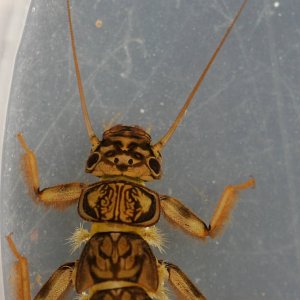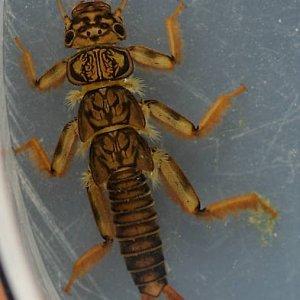You are using an out of date browser. It may not display this or other websites correctly.
You should upgrade or use an alternative browser.
You should upgrade or use an alternative browser.
Recent content by Mark Melton
-

Lake mayfly
Probably grow in both the creek and the lake. They're really tough little guys as nymphs and can tolerate flooded fields and even sewage ponds. Excellent examples of being able to make it in nearly every freshwater environment.- Mark Melton
- Post #9
- Forum: Fly Tying and Entomology
-

What are you listening to?
- Mark Melton
- Post #4,023
- Forum: General Discussion
-

What are you listening to?
- Mark Melton
- Post #4,005
- Forum: General Discussion
-

What are you listening to?
- Mark Melton
- Post #3,988
- Forum: General Discussion
-

Calineuria californica
These larvae were found in the Russian River in moderate to fast flows. They prefer a rocky bottom. You have to be careful putting them in with mayfly nymphs or caddis larvae as they'll eat them. Mature larvae are 16-22 mm in length (not including antennae or cerci). They are found throughout...- Mark Melton
- Thread
- Replies: 4
- Forum: Fly Tying and Entomology
-

0994.jpeg
- Mark Melton
- Media item
- Comments: 0
- Category: Fly Tying
-

0993.jpeg
- Mark Melton
- Media item
- Comments: 0
- Category: Fly Tying
-

NFR Humor
- Mark Melton
- Post #4,615
- Forum: General Discussion
-

What are you listening to?
- Mark Melton
- Post #3,963
- Forum: General Discussion
-

What are you listening to?
- Mark Melton
- Post #3,898
- Forum: General Discussion
-

Got any bird pics?
Probably Bullocks Oriole https://www.birdnote.org/listen/shows/bullocks-oriole-weaves-nest- Mark Melton
- Post #1,368
- Forum: The Arts: Poetry, Literature, Photography & More
-

North Fork Stillaguamish and the loss of its "bugs"
Curt- I don't know If the large floods in and of themselves would be enough to lower insect populations very much or over long periods but the siltation certainly would. Although over a longer period of time you might end up with a relatively large population of different species that favor silt...- Mark Melton
- Post #6
- Forum: Salmon, Steelhead & other Sea Runs
-

North Fork Stillaguamish and the loss of its "bugs"
The increase in silt and other small particulates contributes to less species being in areas previously being rocky or gravelly. It also lessens chances for redds in that fry will not get enough oxygen. Insects will not have rocks or gravel to hide in, or to feed off of (algae, diatoms, etc.)...- Mark Melton
- Post #3
- Forum: Salmon, Steelhead & other Sea Runs
-

ID reddish brown clinger?
There are reddish variations of Rhithrogena nymphs. They're fairly common in this area (Northern California). Here are some pictures of Rhithrogena nymphs taken at the Russian River. In this area about 1 in 20 nymphs have the reddish coloration. Th- Mark Melton
- Post #2
- Forum: Fly Tying and Entomology
